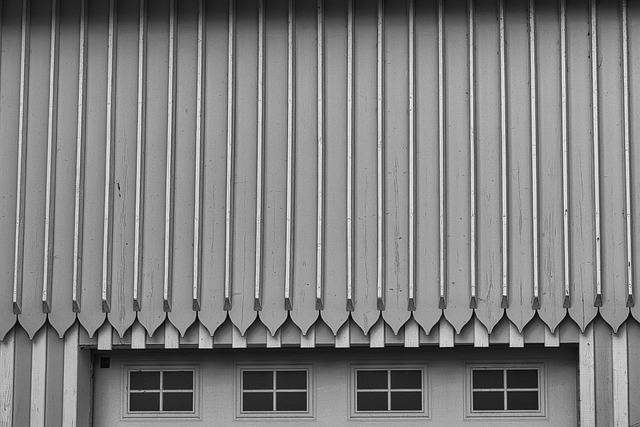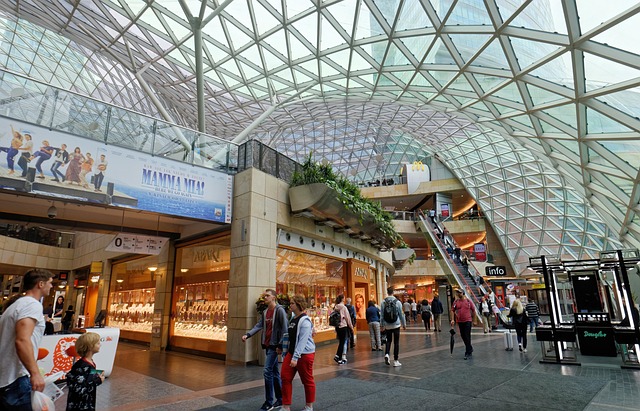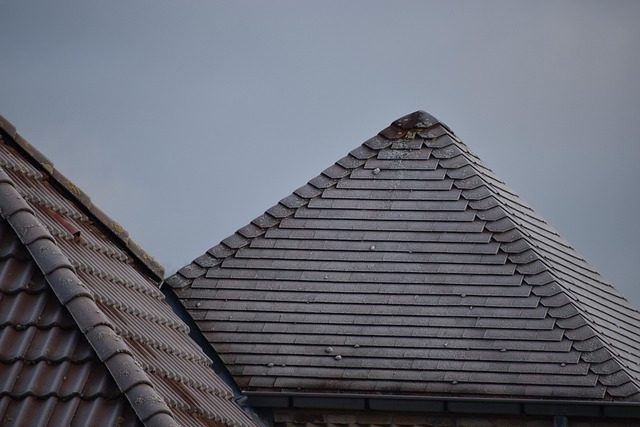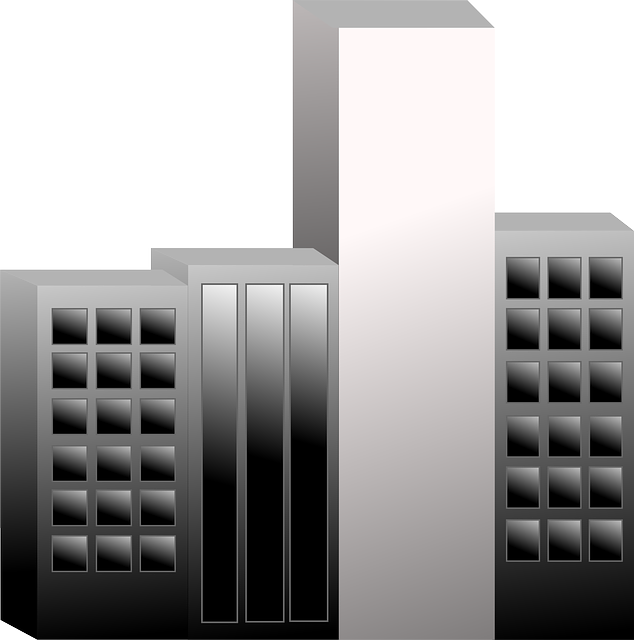Commercial roofing demands specialized solutions addressing larger areas, heavy loads, harsh weather, and equipment integration like HVAC units or solar panels. Key considerations include durability, energy efficiency, sustainability, maintenance, and material selection. Flat roofs offer cost-efficiency with advanced drainage, pitched roofs provide aesthetic flexibility, while green roofs emerge as an eco-friendly option. Regular maintenance extends lifespan through early issue detection and timely repairs. Material choices like metal, asphalt shingles, or flat membranes balance structural integrity, visual appeal, climate conditions, and sustainability. Future trends include green roofing systems, modular installations, smart technologies for predictive maintenance, and increased emphasis on durability, energy efficiency, and recycling.
Roofing systems for commercial properties demand a unique blend of durability, efficiency, and sustainability. In today’s competitive market, understanding the specific needs of these structures is paramount. This comprehensive guide delves into the essential aspects of commercial roofing, exploring various types of roof systems, durability considerations, energy efficiency solutions, and eco-friendly materials. By navigating these key elements, property owners and managers can make informed decisions to ensure optimal performance and long-term value.
Understanding Commercial Roofing Needs

Commercial roofing presents unique challenges compared to residential roofs. These structures often encompass vast areas, demanding robust and durable systems capable of withstanding heavy loads, harsh weather conditions, and high exposure. Moreover, commercial properties typically require roof systems that accommodate extensive equipment, such as HVAC units, satellite dishes, or solar panels.
Understanding these specific needs is vital for selecting appropriate roofing materials and designs. Commercial roofs must offer long-term performance, easy maintenance, and cost-effectiveness. Additionally, energy efficiency and sustainability are increasingly important considerations, driving the adoption of reflective coatings, green roofs, or other eco-friendly solutions.
Types of Roof Systems for Commercial Properties

Commercial properties come in a variety of shapes and sizes, requiring roof systems tailored to their unique needs. Flat roofs are a common choice for larger buildings due to their cost-effectiveness and easy accessibility for maintenance. These roofs often feature advanced drainage systems to handle heavy rainfall efficiently.
For structures with more curvature or aesthetic considerations, pitched roofs offer a versatile solution. They can be designed in various styles, from traditional to modern, and accommodate different cladding materials. Additionally, green roofs are gaining popularity in urban areas, providing insulation, reducing energy costs, and contributing to environmental sustainability in the context of commercial roofing.
Durability and Longevity: Key Considerations

When it comes to commercial roofing, durability and longevity are paramount considerations. Commercial properties demand robust roof systems that can withstand the rigors of daily operation, extreme weather conditions, and the constant exposure to various environmental factors. The right roofing materials and construction techniques play a critical role in ensuring these structures remain protected for years to come.
Long-lasting commercial roofs not only minimize maintenance costs but also offer peace of mind for property owners and managers. High-quality roofing systems are designed to resist tearing, cracking, and punctures, preventing water intrusion that could lead to costly interior damage. Additionally, modern commercial roofing solutions often incorporate energy-efficient features, such as reflective coatings or insulation, contributing to reduced operational costs and a smaller carbon footprint.
Energy Efficiency in Commercial Roofing

In the realm of commercial roofing, energy efficiency has emerged as a game-changer. Modern commercial roofs are no longer just protective barriers against the elements; they actively contribute to building sustainability and operational cost savings. By incorporating reflective materials and advanced insulation, these roofs minimize heat transfer, reducing the burden on HVAC systems and lowering energy consumption. This is particularly beneficial in bustling urban centers where buildings stand as towering landmarks, consuming significant amounts of energy for temperature control.
Energy-efficient commercial roofing goes beyond surface treatments. Innovative designs, such as cool roofs and green roofs, offer additional benefits. Cool roofs use reflective coatings to absorb less heat, while green roofs incorporate vegetation that provides insulation and absorbs rainwater, further enhancing energy savings and contributing to a building’s overall environmental footprint. These sustainable practices not only lower utility bills but also create healthier indoor environments, making them essential considerations for any commercial property owner looking to stay competitive in today’s market.
Maintenance and Repair Strategies

Regular maintenance and prompt repair are vital for extending the lifespan of commercial roofing systems. A well-planned inspection schedule, typically recommended every 6 months, allows for early detection of issues like damaged shingles, leaks, or signs of wear and tear. By addressing these problems promptly, property managers can prevent minor repairs from escalating into costly replacements.
Effective maintenance strategies also involve keeping records of all work done, ensuring proper storage and disposal of materials, and regular cleaning to maintain the system’s efficiency. For commercial properties with flat roofs, additional measures like sealing cracks, repairing or replacing missing tiles, and regularly testing drainage systems are essential to ward off water-related damage.
Choosing the Right Materials

When it comes to commercial roofing, choosing the right materials is paramount for both functionality and aesthetics. Factors like climate, structural integrity, and budget heavily influence the selection process. For example, in regions with frequent snowfall, a roof system that offers excellent insulation and resistance to extreme temperatures becomes non-negotiable. On the other hand, areas prone to strong winds require materials that can withstand high wind loads without compromising stability.
Durability is another key aspect to consider. Commercial properties demand roofing solutions that can stand the test of time, especially with constant exposure to varying weather conditions and potential foot traffic. Therefore, materials like metal, asphalt shingles, or flat roof membranes may be preferred based on their longevity and resistance to wear and tear. Additionally, selecting environmentally friendly options can contribute to a building’s overall sustainability, aligning with modern commercial property trends.
Environmental Impact and Sustainability

In the realm of commercial roofing, sustainability has become a paramount concern for property owners and builders alike. Environmental impact is no longer a secondary consideration but a core aspect that defines the modern commercial roofing system. Green roofs, for instance, offer an eco-friendly solution by integrating vegetation into the roof structure, reducing the urban heat island effect, and improving energy efficiency. These systems not only enhance aesthetics but also provide insulation, thereby lowering heating and cooling costs.
The choice of materials plays a significant role in minimizing the environmental footprint. Commercial roofing professionals are increasingly opting for recycled and recyclable materials such as metal, rubber, and synthetic underlayments. Additionally, choosing energy-efficient membranes and implementing proper waste management practices during installation can substantially contribute to the overall sustainability of a building’s roof. These eco-conscious approaches not only benefit the environment but also offer long-term cost savings for commercial property owners.
Future Trends in Commercial Roofing

The future of commercial roofing is poised for significant advancements, driven by evolving technologies and a growing focus on sustainability. One prominent trend is the increasing adoption of green roofing systems. These innovative designs incorporate vegetation, helping to mitigate urban heat islands, improving air quality, and providing insulation benefits that reduce energy consumption. Additionally, modular and prefabricated roof systems are gaining traction due to their speed of installation, minimal site disruption, and ability to be easily adapted for both new construction and retrofits.
Smart roofing technologies are another area of focus. Integrating sensors and connected devices allows for real-time monitoring of roof conditions, predictive maintenance, and enhanced safety measures. These systems can detect leaks early, optimize ventilation, and even respond to extreme weather events, ensuring the longevity and performance of commercial properties’ roofs. As environmental regulations tighten, expect to see more commercial roofing solutions that prioritize durability, energy efficiency, and recycling materials.
